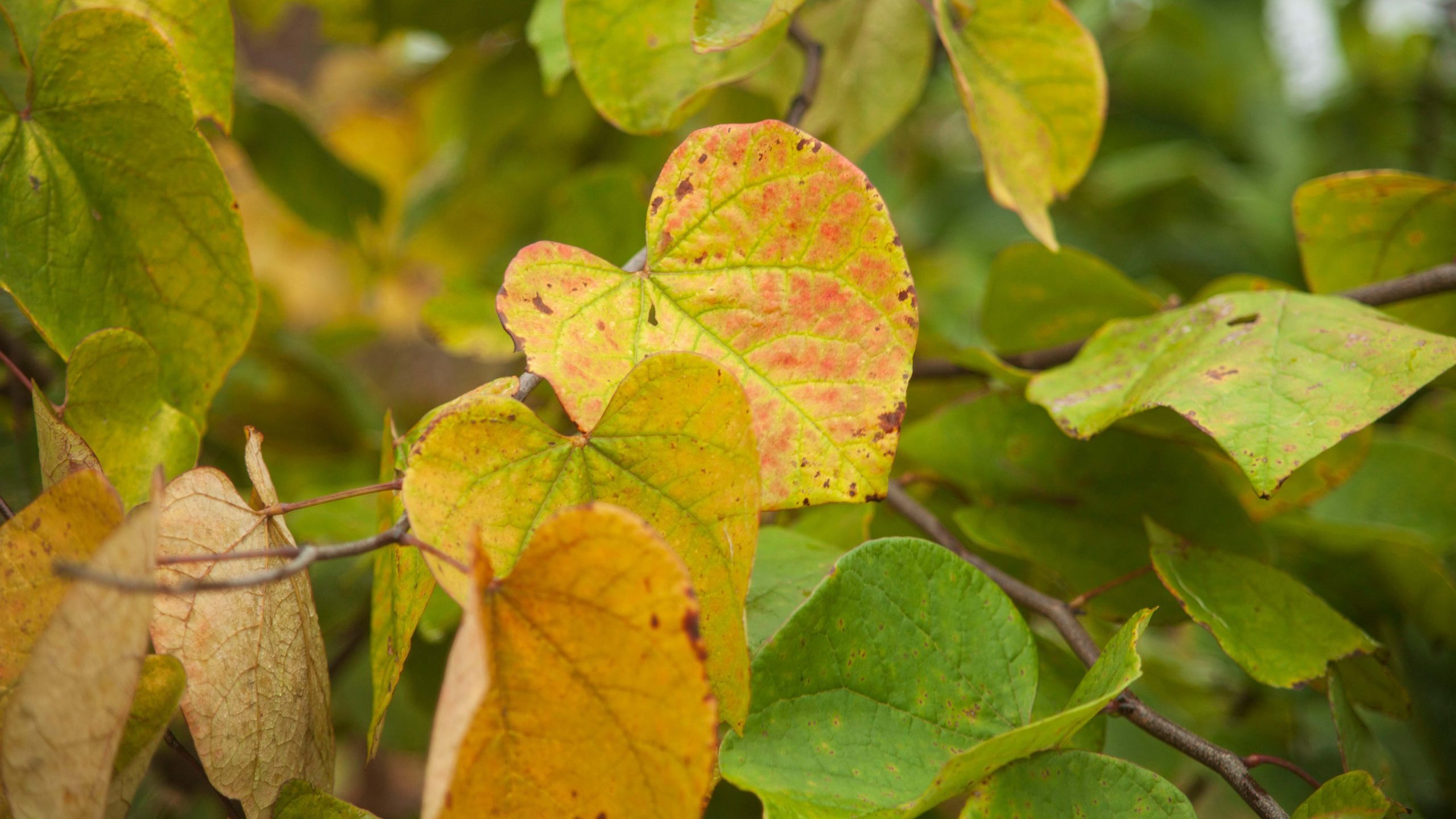While the Flame Thrower™ redbud displays a complexity of colors while blooming, the process of creating the plant follows basic genetic principles that many may recall from a high school biology class, Dennis Werner said.
Werner was interested in crossing a purple-leaf redbud with a gold-leaf redbud. Based on similar crosses in other plant species (e.g., orchids), Werner expected to eventually create a redbud that expressed bronze leaves. But his results surprised him.
He crossed a gold-leaf parent with a purple-leaf parent, which created the F1 generation of redbuds. The “F” stands for filial, which derives from the Latin word for son or daughter, according to Merriam-Webster. In this way, the F1 generation of plants are the first offspring from these parents. Because both the purple and gold-leaf traits are recessive, these F1 plants all were “normal” green leaf plants.
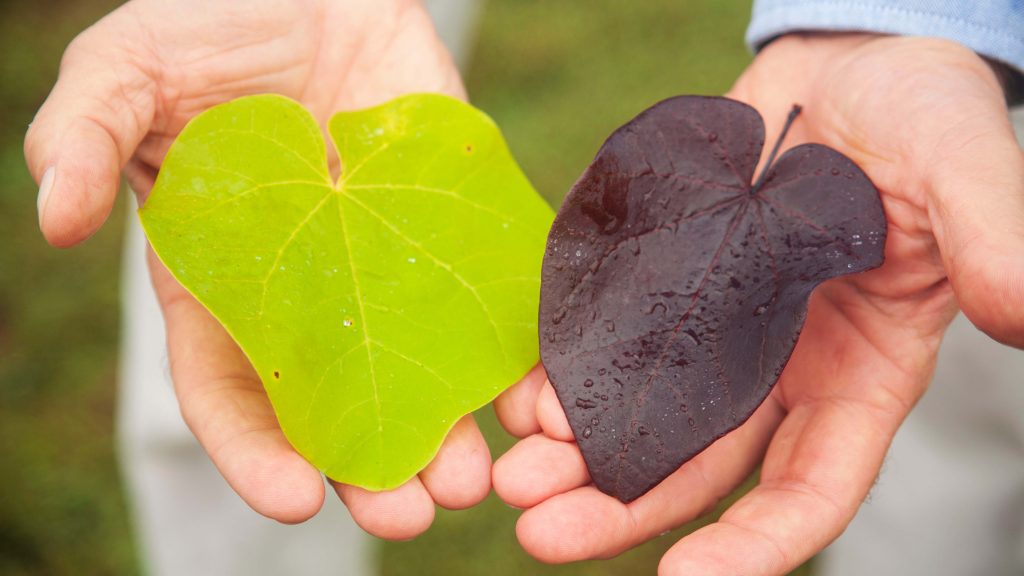
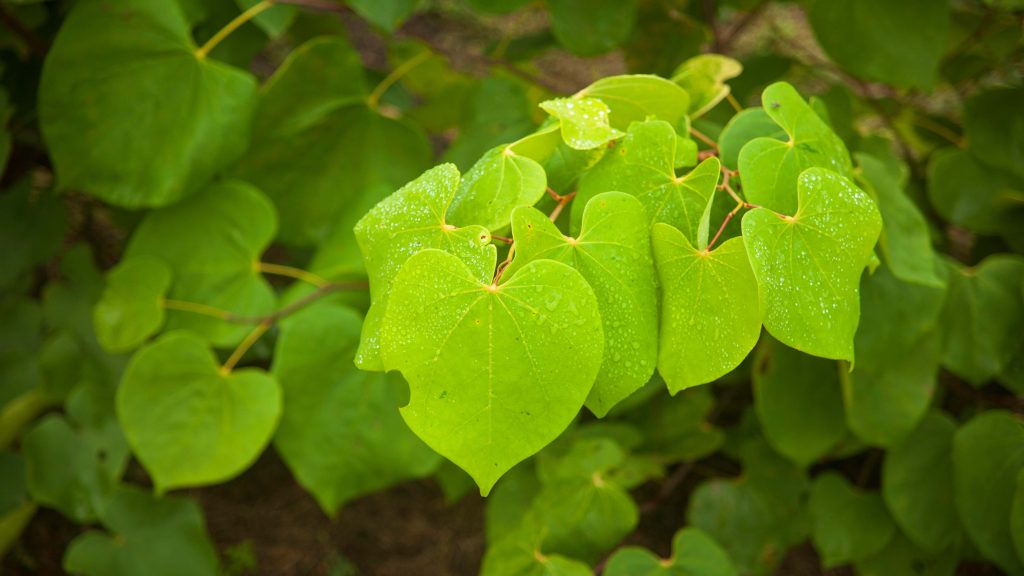
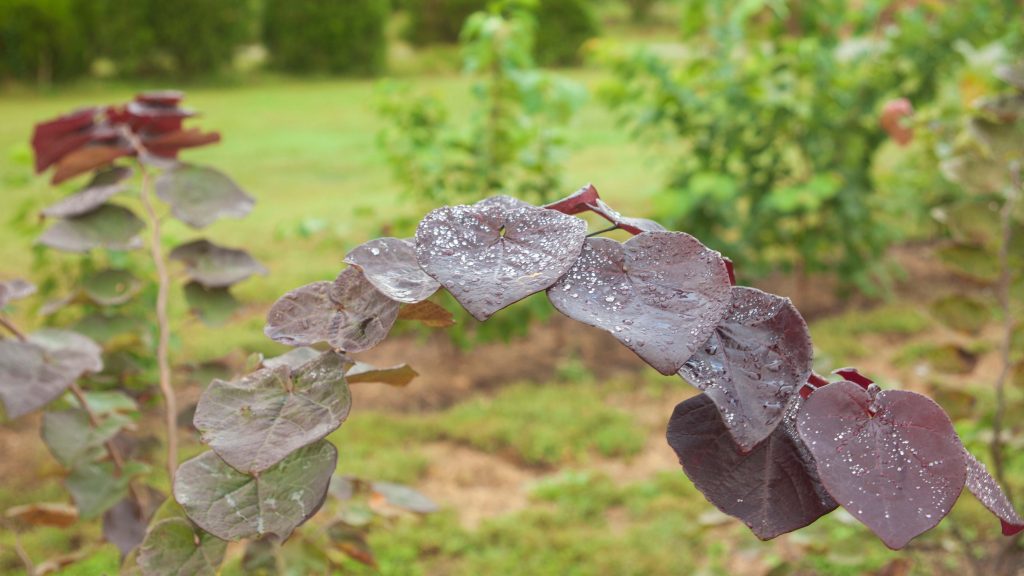
In other words, a person who approached this F1 generation would see no difference in its appearance (e.g., phenotype). However, the genetics of some of these plants (e.g., genotype) had shifted. This change would only become apparent, however, by creating an F2 generation, which is the second offspring of the parent plants.
When Werner crossed two F1 parents to create this F2 generation, some of the resulting F2 redbuds were gold-leaf, others were purple-leaf, and a few plants were something completely different. These plants had inherited both the purple and gold leaf traits. Because of this combination of leaf colors, Werner expected to start seeing bronze leaves.
When the first leaves emerged, however, Werner was stunned.
The first leaf was golden yellow, and then the second leaf was purple and we thought, ‘What the heck is going on here?’ It was pretty exciting.
Werner brought this excitement back to the classroom. He showed his horticulture students the first photograph of the Flame Thrower™ redbud. Now, he imagines one of these students, who saw the plant in “diapers,” seeing the Flame Thrower™ redbud at a garden shop and realizing they knew about it before most everyone else.
Once Werner and his research assistants saw those first leaves–some gold and the other purple–they waited in anticipation for what would happen next.
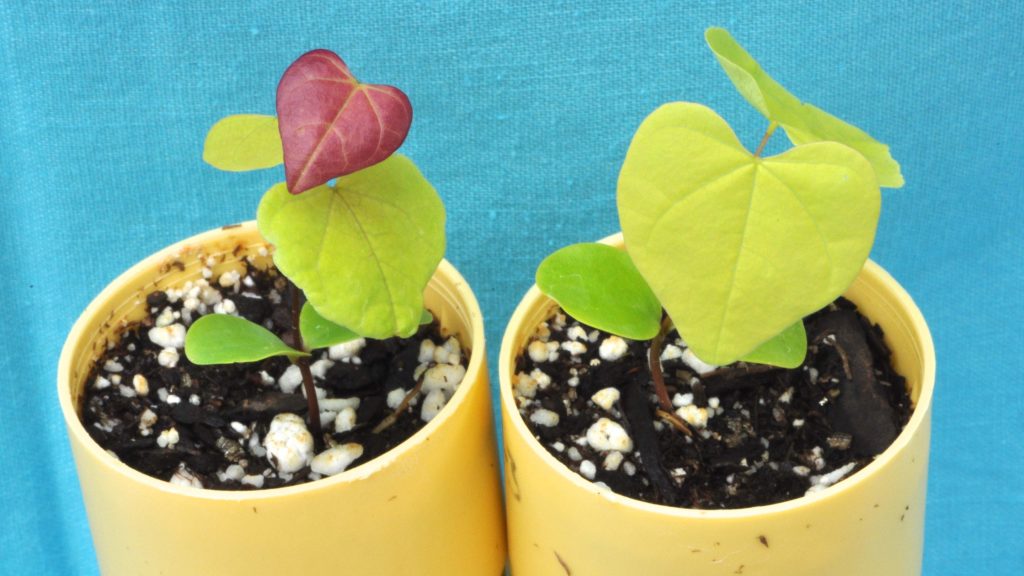
As the tree matures, its leaves began to express a rainbow of vibrant colors, oranges, purples, reds, and gold, Werner said. If this Flame Thrower™ redbud was a cross between purple and gold, why were its leaves expressing this range of colors?
The answer lies in how the plant expresses each color trait.
Purple and gold-leaf traits influence the leaf color in different ways. Werner uses the metaphor of a leaf as a turkey sandwich to explain this interaction. The purple-leaf trait influences the color of the bread (e.g., outer parts of the leaf), while the gold-leaf trait influences the color of the turkey (e.g., inner parts of the leaf).
As the leaves mature, this interplay of gold and purple colors at different spots during leaf development will create this range of colors.
However, genetics alone are not the only factor that controls the leaf’s color expression. Werner explained that these hues are dependent on a variety of factors, including temperature. Because of this variability, a Flame Thrower™ redbud may look differently in North Carolina compared to the Pacific Northwest.
- Categories:
